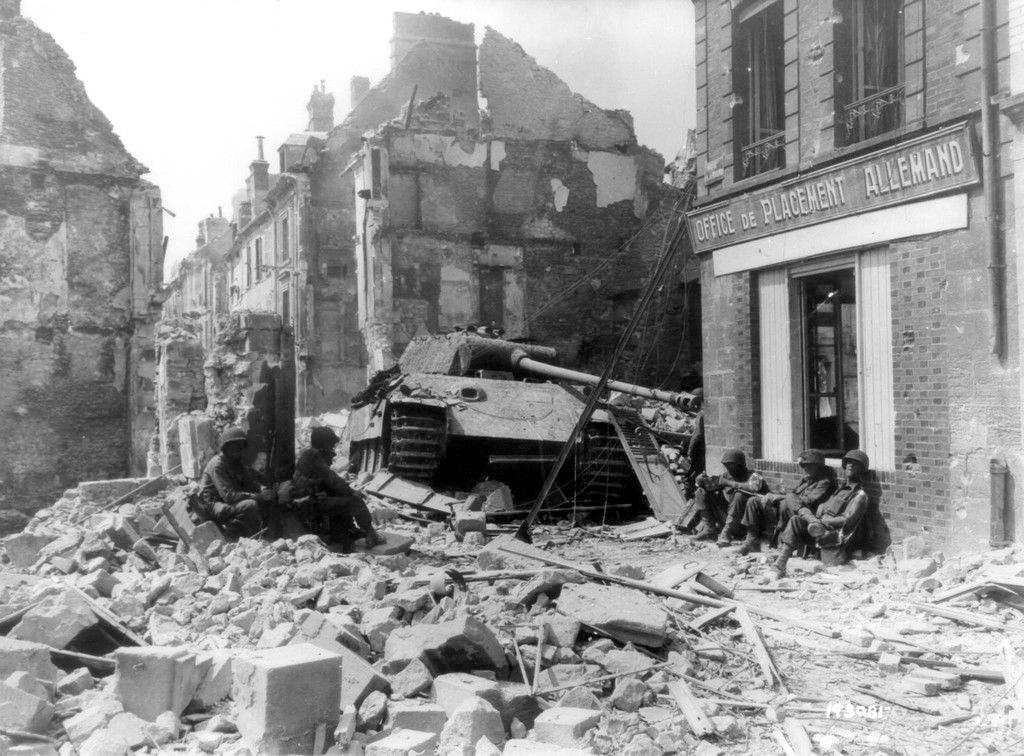
World War II: Vichy France--French Conscript Labor in the Reich

Figure 1.--Marshall Pétain made the judgement that surrendeing to Hitler and the NAZIs was the only way to save France was to offer themselves to the tender mercies of Adolf Hitler and the NAZIs (June 1940). For 2 years this worked well. No French leader has made such a disaterous deal that very nearly led to the destruction of the French nation and millions of French lives. Paris unlike London did not suffer the horrors of the Blitz. The German occupation was at first relatively correct if highly explotive. But gradually the NAZIs began to tighten their grip on France and its people. The Office de Placement Allemande (OPA) became the organnizational network for the dreaded Service du travail obligatoire (STO) which began conscroting French workers and deporting thm o the Reich. And this was just the beginning for what the NAZIs had in store for France aftr they won the War. Nothing could more epitomize the debt France toward America than this photograph of American GIs besides the German Panther tank they knocked out besides an OPA storefront. The photograph has no caption, but almost certainly was taken in Normandy during the American breakout leading to the liberation of France (July 1944).
|
|
The Germans opened enlistment offices of the Office de Placement Allemande (German Placement Office -- OPA). This began as a voluntary effort. The iniitial purpose was to convince understandably reluctant French workers pf the 'benefits' in enlisting for employment in the German war industries in the Reich. They promised higher wages and better working conditions. (The manipulated exchange rate meant that wages paid in Reichmarks did buy a lot of Francs.) The newspapers published letters from French workers in the reich extoling their new conditions. Glossy publications were distrubyed describing the wonderful working conditions in the Reich. They had little success. The success of the Soviet offensive before Moscow (December 1941) meant that the war in the East would be a portacted struggle. And with German workers being mobilized by the military, the NAZIs needed labor. Sauckel thus begsan to drawn on workers in Western European counties occupied by Germany. The numbers at first were small. The NAZIs ordered Vichy (May 1942) to supply 250,000 French workers for work in Germany by July. Vichy authorities, willing to cooperate in other areas were not anxious to transport French workers to Germany. Both Pétain and Laval realised the inevitable impact that conscripting labor for transport to Germany would have on the popularity of the regime. Pétain's popularity was based on the fact that Vichy had taken France out of the war and thus limited the impact on France. Laval devised a scheme called la relève. This provided for the repatriation of one French POW for every three workers who volunteered for war work in Germany. Vichy authorities, however, were unable to voluntarily recruit the number of workers demanded by the Germans. As a result, Laval issued a conscription order (September 1942). A British newspaper reported that the new Vichy law "conxcripts all men between the ages of 18 and 50 and unmarried women between 21 and 35 for 'work necessary in the national interest'. British and other foreign residents also are affected. The Daily Telegraph (London newspaper) correspondent on the French frontier says the law is the most drastic ever passed in France and is the result of German failure to induce French workers to go to German war factories." [French workers ...] To enforce the conscription, Vichy authorities thus had to introduce conscription, le Service du travail obligatoire (Obligatory Work Service--STO) (February 1943). The OPA became the organization and sorting facility for the STO. The storefront signs, however, were not changed as they sounded less oppresive. The NAZIs using their Vichy regime began deporting French workers (February 1943). [Ryan, p. 178.] This more than any other single matter, began to change the attitide of the French people toward Pétain and his Vichy regime. In adition the War news now suggested that the NAZIs were not going to win the War. There was a substantial increase in the numbers of réfractaires. These were men that refused to report for conscription. Some simply hid. Others joined the Resistance. Some sought jobs in occupations exempted from the STO such as mining. France would make an important contribution to the German work force. Eventually about 650,000 Frenchmen and 44,000 Frenchwomen were deported to Germany for forced labor. France became the second most important contributor of unskilled labor to the German war effort. Only Poland provided larger numbers of workers. France was the leading supplier of skilled labor. [Atkin, p.174.]
Sources
Atkin, N. Pétain (London & New York: Longman, 1998).
Ryan, Donna F. The Hollocaust & the Jews of Marseille: The Enforcement of Anti-Semitic Policies in Vichy France (University of Illinois Press: 1996), 307p.
"French workers for Germany: Laval's conscription order," The Mercury Hobart, Tasmania (September 15, 1942), p. 1.
CIH -- WW II

Navigate the CIH World war II Section:
[Return to Main Vichy Economic Collboration/NAZI Exploitation]
[Return to Main Vichy page]
[Biographies]
[Campaigns]
[Children]
[Countries]
[Deciding factors]
[Diplomacy]
[Geo-political crisis]
[Economics]
[Home front]
[Intelligence]
[POWs]
[Resistance]
[Race]
[Refugees]
[Technology]
[Bibliographies]
[Contributions]
[FAQs]
[Images]
[Links]
[Registration]
[Tools]
[Return to Main World War II page]
[Return to Main war essay page]
Created: 10:57 AM 11/30/2015
Last updated: 10:57 AM 11/30/2015



